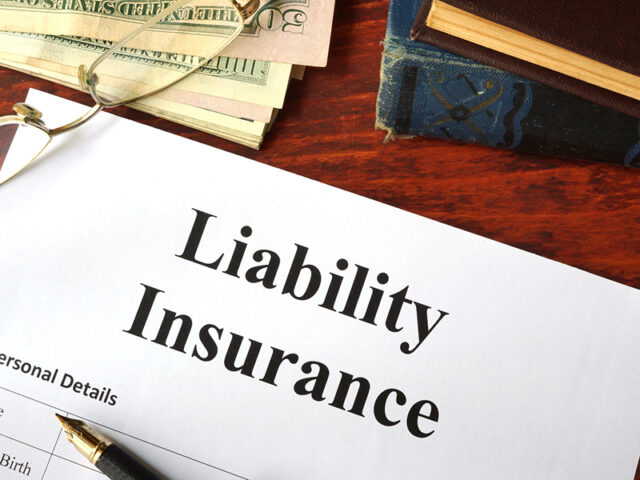
Contractor liability insurance stands as a cornerstone safeguard in the construction industry, providing essential protection against unforeseen risks and liabilities. However, the pricing of this insurance can fluctuate significantly, influenced by several critical factors.
In this article, we look into five essential elements that wield substantial influence over the cost of contractor liability insurance. They serve as important considerations, aiding contractors in navigating the expenses associated with securing adequate protection for their operations.
Comprehending these elements is crucial for informed decision-making regarding insurance coverage. It aids in striking a balance between the necessity for comprehensive protection and the financial considerations associated with obtaining it.

Industry Risk and Nature of Work
The nature of construction work significantly impacts the cost of insurance premiums. Certain specialties or tasks within the construction sector inherently pose greater risks. For example, roofing, demolition, and electrical work involve elevated hazards compared to general contracting duties.
These specialized roles demand stringent safety protocols and specialized training, consequently influencing insurance premiums to account for the elevated risks involved. Insurers adjust premiums based on the increased likelihood of accidents or claims arising from these higher-risk construction activities.
According to the 2021 report by the Bureau of Labor Statistics, almost one-fifth of workplace fatalities occurred in the construction industry. Among these fatalities, more than 33% were linked to slips, falls, and trips, predominantly stemming from falls to lower levels. Notably, the construction industry accounted for around 45 percent of all fatal falls, slips, and trips in 2021. Considering these statistics, contractors engaged in these high-risk activities often face heightened insurance premiums.
Claims History
A contractor’s claims history significantly influences insurance costs. Insurers heavily rely on this history to assess the likelihood of future liabilities and adjust premiums accordingly.
A construction company with a history of multiple liability claims arising from on-site accidents or property damages sends a clear signal to insurers. This history is interpreted by insurers as a warning sign indicative of potential future liabilities that might arise from the company’s operations.
Insurers seek to mitigate the perceived elevated risk by adjusting premiums upward. These higher premiums reflect the potential financial exposures anticipated by insurers due to the contractor’s history of claims.
Essentially, this assessment of past claims serves as a predictor guiding insurers in estimating and mitigating future risks through adjustments in insurance premiums.

Project Scale and Complexity
The scale and complexity of construction projects are pivotal factors that significantly impact insurance costs, as outlined by Commodore Insurance Services. Larger projects characterized by extended timelines, intricate designs, or multifaceted scopes inherently pose greater risks.
These elevated risks, encompassing potential delays, design intricacies, and on-site accidents, directly contribute to increased exposure and subsequently lead to higher insurance premiums.
Insurers carefully evaluate these complexities, factoring them into the assessment when determining insurance policy pricing for such projects. Understanding these influential factors is crucial for businesses seeking to gauge insurance premiums aligned with the scale and intricacy of their construction endeavors.
If you’re interested in determining the premium for your business based on its scale, you can click here for more information.
Geographical Location
Geographical location stands as a critical determinant influencing insurance costs for contractors. Diverse regional factors, such as state regulations, local market conditions, and environmental risks, significantly impact insurance pricing.
Locations susceptible to natural disasters, high crime rates, or strict regulations often incur higher insurance premiums due to increased associated risks.
For instance, as defined by the Insurance Information Institute, in 2022, natural catastrophes caused at least $25 million in insured property losses. Additionally, it resulted in 10 or more fatalities, 50 injuries, or 2,000 filed claims or damaged structures.
In 2022, the United States witnessed a staggering 119 natural catastrophes, marking a nearly 23% increase from the previous year.
Consequently, insurance premiums for contractors in regions exposed to high environmental risks exhibit notable variations. These variations reflect the increased liabilities and potential financial exposures associated with these areas.

Coverage Limits and Types
The Risk and Insurance Management Society (RIMS) highlighted that insurance expenses for contractors are directly impacted by the extent and specifics of coverage desired. Contractors opting for broader coverage limits and additional endorsements should anticipate potential premium hikes, with increases reaching as high as 25% in some instances.
Those aiming for comprehensive coverage with increased limits and supplementary riders naturally face higher premiums compared to individuals choosing more standard coverage options.
Effectively managing insurance expenses entails a careful balance: customizing coverage to align with project requirements while considering the cost implications. This strategic approach allows contractors to optimize coverage without overextending expenses, ensuring adequate protection while meeting financial constraints.
Mitigating Insurance Costs: Strategies for Contractors
Implementing effective strategies to mitigate insurance expenses is essential for contractors seeking to maintain financial stability while ensuring comprehensive coverage.
- Risk Management: Conduct thorough risk assessments and implement proactive measures to mitigate potential liabilities, thereby reducing insurance risks and costs.
- Claims Management: Maintain an effective system for handling claims promptly and efficiently, as a robust claims management strategy can help mitigate long-term premium increases.
- Safety Protocols and Training: Prioritize safety by implementing stringent protocols and continuous training programs to minimize accidents, demonstrating a commitment to risk reduction.
- Coverage Customization: Collaborate closely with insurance professionals to tailor coverage that aligns with specific project needs, avoiding over-insurance or underinsurance.
- Maintaining a Favorable Track Record: Strive to uphold a clean claims history and a strong financial standing, which can positively influence negotiations for more competitive insurance terms.

In conclusion, contractor liability insurance costs are intricately influenced by a multitude of factors, encompassing the nature of work undertaken and geographical elements. Understanding this intricate interplay is crucial for contractors to manage insurance expenses effectively.
By understanding these factors and implementing proactive risk management strategies, contractors can navigate insurance costs more effectively while ensuring adequate protection against potential liabilities.
Balancing comprehensive coverage with cost considerations is key to securing optimal insurance protection. This approach empowers contractors to make informed decisions, safeguarding their businesses against unforeseen risks while maintaining a healthy financial outlook.









